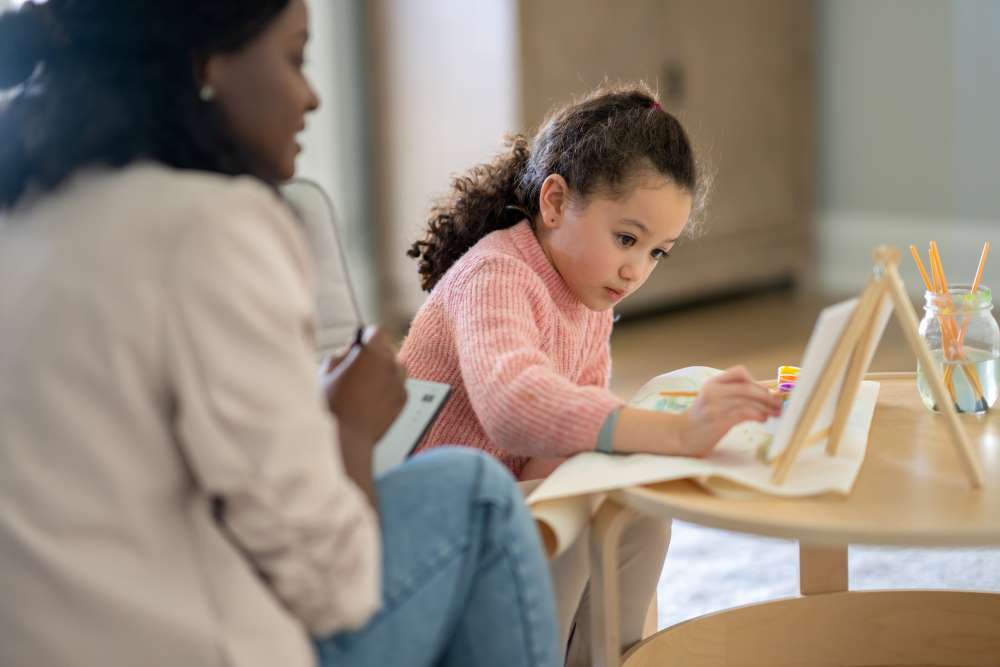
Directed drawing is a method within occupational therapy that helps children enhance their motor skills. In the context of occupational therapy, drawing isn't merely an artistic endeavor but a structured approach to facilitate the development of visual-motor integration. By guiding a child through the process of creating images, they learn to coordinate their hand movements with what they see, reinforcing the connection between perception and motor execution.
The benefits of occupational therapy activities for kids are vast, ranging from improved hand-eye coordination to the ability to execute detailed movements with precision. Drawing activities require the child to judge spatial relations and translate mental images onto paper, offering a fun and engaging way to improve their fine motor skills. These skills are foundational for tasks such as handwriting, buttoning a shirt, or assembling a puzzle – all of which are essential for a child's independence and success in school settings.
Key Takeaways
-
Directed drawing integrates visual-motor skills essential for child development.
-
Occupational therapy activities can significantly enhance fine motor control.
-
Drawing exercises translate to practical skills in academic and daily life.
The Role of Directed Drawing in Occupational Therapy
Directed drawing is a structured approach that can significantly enhance motor skills as part of occupational therapy. It engages a child’s fine motor control, visual motor integration, and cognitive abilities, which are critical elements in early development.
Understanding the Basics of Occupational Therapy
Occupational Therapy (OT) utilizes tasks and activities to engage individuals in behaviors that promote their health and functional abilities. OT helps children with various needs improve their cognitive, physical, sensory, and motor skills to enhance their self-esteem and sense of accomplishment.
The Connection Between Directed Drawing and Motor Development
Directed drawing in OT is a carefully crafted exercise that children follow to create a specific drawing. This activity encourages children to improve their fine motor skills and motor planning by using tools such as pencils, crayons, and markers. As they grip these items, they work on the control and movement of their hands and fingers.
Goals and Benefits of Directed Drawing
This tool in occupational therapy aims to strengthen coordination, refine visual perceptual skills, and improve visual motor integration. These are foundational skills that facilitate a child's ability to perform daily tasks such as using scissors or writing with a pen. Directed drawing offers a fun yet structured way of practicing these crucial skills.
Strategies for Implementing Directed Drawing in Therapy Sessions
Therapists may introduce various strategies into their therapy sessions to maintain children’s engagement while using directed drawing as a therapeutic tool. Games, reusable drawing items like chalk, and sequential illustrations are utilized, adding diversity to therapy techniques and assisting in the development of fine motor control.
Enhancing Motor Skills Through Directed Drawing Activities
Directed drawing activities in occupational therapy offer a structured way to enhance both fine and visual motor skills, which are critical for a child's development in areas such as handwriting, self-care tasks, and general daily living skills. Through guided instruction, children learn how to replicate lines, shapes, and images, fostering their ability to interpret visual information and translate it into coordinated hand movements.
Age-Appropriate Drawing Exercises
For toddlers and young children, age-appropriate drawing exercises often focus on simple shapes and lines. These are the building blocks for developing fine motor control that is necessary for more complex tasks like writing letters. A basic exercise might involve tracing a series of straight and curved lines or drawing circles and squares. As children mature, the complexity of the drawings increases, which further refines their dexterity and coordination.
Case Studies and Evidence-Based Outcomes
Multiple case studies demonstrate the effectiveness of directed drawing. For instance, students who engaged in step-by-step drawing activities showed significant improvement in their visual motor skills, which is essential for both academic success and everyday tasks. These outcomes are measurable and backed by data that reflect better handwriting quality and increased accuracy in tasks requiring eye-hand coordination.
Using Directed Drawing to Improve Daily Living Skills
Directed drawing impacts daily living skills by developing the hand strength and control needed for activities such as buttoning clothing or tying shoelaces. When children practice drawing, they often mimic actions that are similar to these tasks, thus improving their fine motor skills and ability to perform them independently.
Creating an Engaging Directed Drawing Environment
To maximize the benefits of directed drawing, occupational therapists create an engaging environment that motivates and interests children. This involves choosing drawing tasks that are relevant to the child's interests and using a variety of surfaces and tools to keep the activities dynamic. Such an environment encourages children to participate actively and enjoy the process of learning and skill development.
Conclusion
Directed drawing in occupational therapy offers a concrete approach to enhancing a child's motor skills. It specifically targets visual-motor integration and motor planning abilities, crucial for academic and daily activities. By engaging in this activity, children learn to process visual information and execute movements with precision and confidence. The positive impact of directed drawing is backed by a variety of occupational therapy resources and studies, emphasizing its role in promoting healthy developmental milestones and greater independence in children with diverse needs.



























